Mary Dow and Charles Douglas the tailor’s eldest child was born Charles Alexander Douglas in 1897. Dad says he hated his middle name. When he joined the army he said his middle name was Dow. Charlie had black hair. He was talented at drawing and I recall seeing cartoons and sketches he drew during WW1.
What job he would have done I do not know, but the advent of WW1 gave him the chance of adventure. He may already have had a job but Dad is not aware of it.
Charlie joined the Cameronians (part of the Scottish Rifles). A lot of records relating to servicemen from WW1 were lost in German air-raids in WW2. Nonetheless, some details of his service have survived.
Why he chose the Cameronians (barracks in Hamilton) and not a Glasgow based regiment is not known: perhaps friends were joining the Cameronians, or it may be that the regiment wore Douglas tartan, having been founded by the Earl of Angus in 1685. A memorial to the latter stands in Douglas village today. From the papers in Uncle Bill Douglas’s collection we know Charlie was in the Western Front theatre for 2 years and 4 months, suggesting he went into action in January or February 1915.
According to Forces War Record, the 2nd battalion took part in three actions in 1915. These were the Battle of Neuve Chapelle, the Battle of Aubers and the action of Bois Grenier. How much Charlie was involved at the front line we cannot know. In 1916 the battalion saw action at the Battle of Albert (part of the Somme offensive) and in 1917 during the German retreat to the HIndenburg Line.
Charlie sustained a gunshot wound to his right knee in action on 25th May 1917. The story from dad is that he was making his way back to the front line with the injury when a doctor encountered him and demanded to know where he thought he was going. Charlie said the front and the doctor said he was to report to a casualty clearing station instead. This may have saved his life as he was taken to No 12 General Hospital at Rouen then returned to England. Colin Douglas tells me that Charlie related one story about this time, which was that when he was being treated at the casualty clearing station he was very worried about his satchel which had been thrown into a corner by an orderly. The satchel contained live bombs! I presume these were Mills bombs, usually known as handgrenades. Charlie’s job was to run along the line of the enemy trench throwing in these devices.
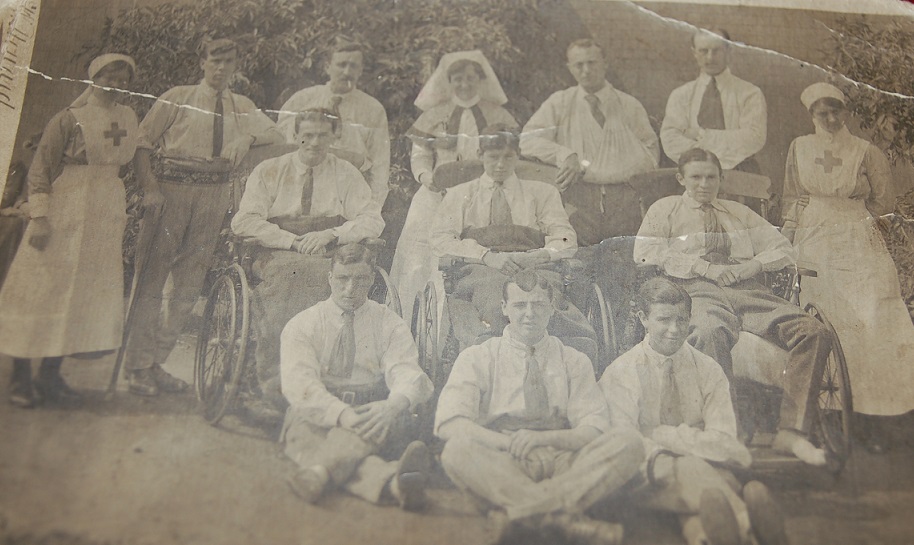
Charlie Douglas recuperating from his knee injury, around May or June 1917 at Rouen. He is sitting on the ground, front right, his boot seemingly touching the camera. How young these soldiers seem! (from Bill Douglas)
Below from Colin Douglas- this helps solve the mystery of which outfit Charlie belonged to: Charlie with 2nd Company, 5th (1st Reserve) Battalion, taken in January 1915, apparently at Leith. This is likely to have been just before sailing to France. Charlie is in the second back row, 3rd from the right as you look at the picture.
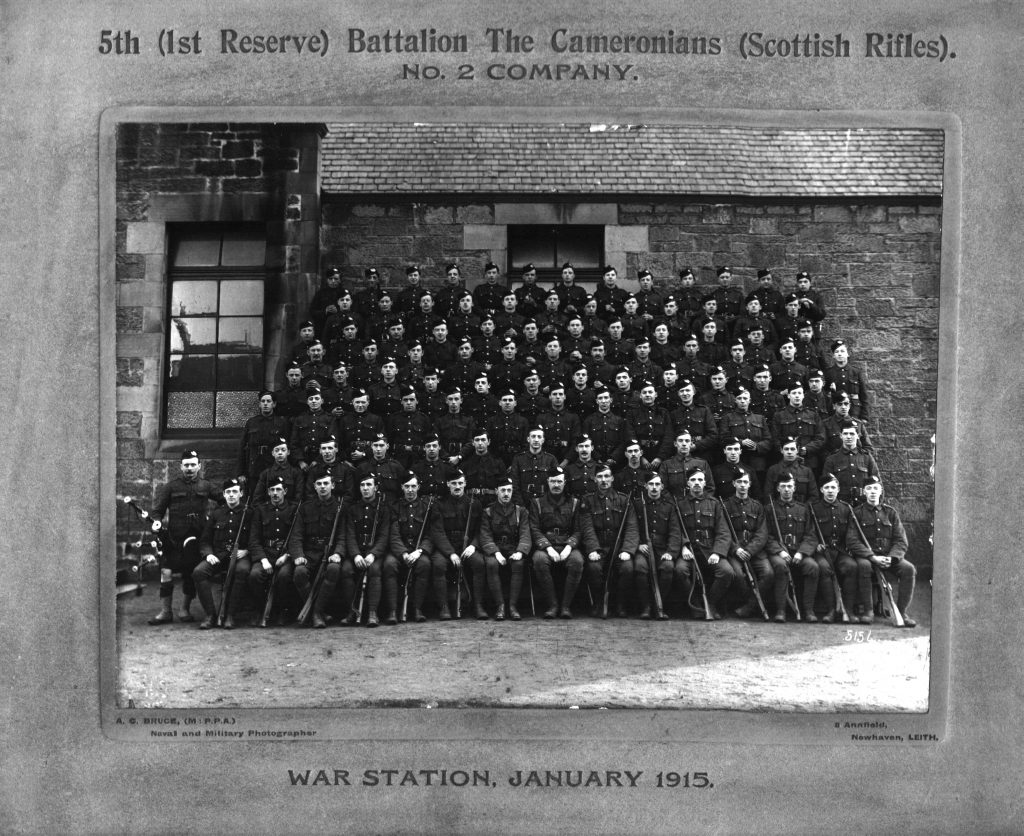
Charlie and the King
Cousin Colin Douglas has written to tell me that our grandfather did not speak much about his wartime experiences other than to tell two stories. The first involved a visit by King George V to the Western Front. Apparently the Scots Rifles marched 30 miles at the rate of 1 3/4 steps a second (the same speed as the Gurkhas) in Douglas tartan trews [trousers] to form a guard of honour for the king. They lined up at the side of a road, stood to attention and the king swept past without his car stopping. The battalion then had to march 30 miles back again. Colin tells me that he was not so keen on monarchical government as a result.
As the king made several visits to the Front it is not possible to date this event. On one occasion the king fell off his horse and injured his pelvis.
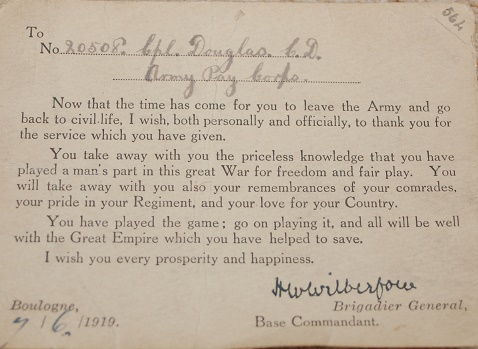
This is the reverse of a card given to all servicemen as they were discharged. The obverse thanks them for playing their part in defending the Empire.
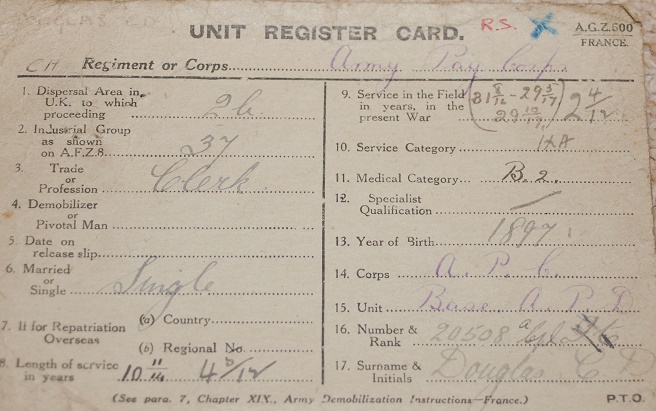
Sections 8 and 9 give the length of service, apparently in years. The 2 and 4/12 years field service seems plausible, suggesting Charlie was in the field from January 1915 until May 1917. However, the length of service in years is certainly not right, nor can it be measures in months in the Labour Corps and then Pay Corps as this would not take us to discharge in June 1919. I presume it must reflect a formula used to compute service.
The card may have thanked Charlie for playing his part in defending the Empire but within a year the Empire had effectively become a Commonwealth, however, as several Dominions refused to take part in the Greek-Turkish War. A new relationship was defined by treaty in the 1920s. By this time Douglas descendants were living in Canada, South Africa and Australia.
Charlie, like his siblings, was a singer. He was a member of the William Morris choir in Glasgow. On one occasion he was a judge on a BBC radio singing programme. During an interval they were all offered an alcoholic drink but Charlie declined as he was teetotal.
I have attempted to find out something about the situation when he was injured. The Battle of Arras had officially come to an end a week or two before, but this may not have meant a complete end to fighting and the Germans may have been attempting to retake ground. On the other hand he may have been serving somewhere quieter at the time but been careless or unlucky enough to be hit by a quick-witted sniper. Or, he may have been involved in a tench raid. Arras is on the line of the Somme. Nonetheless, I have discovered some useful information.
On the 5th May five members of the 2nd battalion were killed and they are buried at Villers Guislain Communal Cemetery, Nord France. Villers Guislain is 16km from Cambrai. Villars Hill Cemetery includes the Gonnelieu Communal Cemetery German Extension and includes 8 British soldiers killed on 5th May along with 400 German soldiers who are buried there. This information comes from www.inmemories.com/Cemeteries/villersguislain.htm. Villars Guislain was occupied by Commonwealth forces from April 1917. Although there are 125 burials and commemorations in the Meath Cemetery there (the majority are from the Cameronians, Queen’s Royal West Surreys and the London Regiment) these all date to 21st September 1917 when the Germans retook the area. Similarly the burials at Gauche Wood date mostly from 18th September. A lot of names comes from the Border Regiment. I noted a Private JM Gloag from the Border Regiment, no 260754, killed on that date.
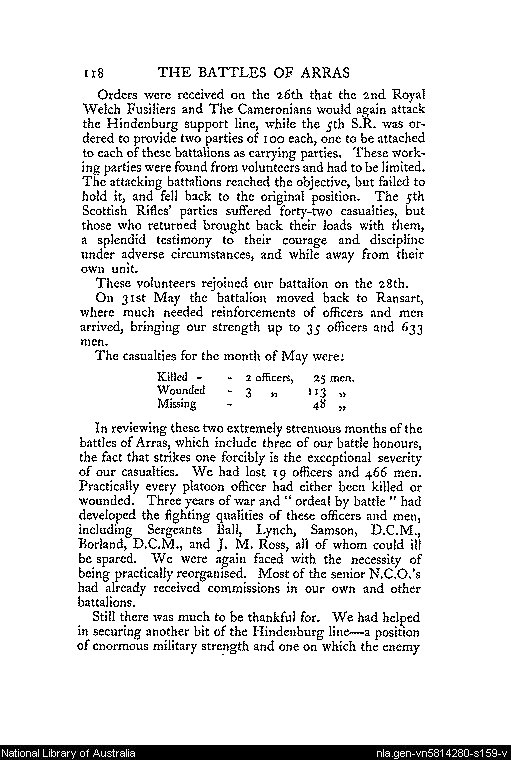
Uncle Bill has shown me a picture of Charlie convalescing during the war. It is shocking to look at how young these casualties look. Charlie at this age resembled his brother John. After recovery he was considered unfit for active service and transferred to the Labour Corps (service no 398417) and then into the Pay Corps (service no 20508).
Charlie received the two medals common to most soldiers, the Victory Medal and the British War Service Medal. Family tradition has it that he was a corporal but the British Army Medal Rolls Index Cards shows him as a private. His service number in the Scottish Rifles was 7493. However, the discharge paper gives his rank as corporal- so this promotion must have come after the Armistice.
http://search.ancestry.co.uk/search/db.aspx?dbid=1262 (Ancestry)
http://discovery.nationalarchives.gov.uk/details/r/D2668348 (Tne National Archives)
Charlie was not eligible for the Mons Star. This was the medal awarded to soldiers who fought in 1914 but it was for those in France on or before 23rd November 1914. As seen above, he must have been at the Front around January 1915; also I possess a brass tin sent by Princess Mary to soldiers at Christmas 1914. It no longer contains whatever was sent and the cover and sides are bruised.
From a later date I have a New Testament which belonged to him. Pasted inside the cover it announces that it is a gift to “CD Douglas, No 7493, B Coy, 5th SR, on active service 1916.” On the other side, rubbed out, it says “CDDouglas, Burntsfield, Edinburgh, 2/2/16.” The date is a little unclear: it may say 2/2/16 or it may say 21/2/16. Or it could be 21/12/16, which would be more likely. In any case, we know that he was on home leave when he received it.
Apparently Charlie was in Ireland at some stage between being injured and leaving the army. Dad thinks this was while he was convalescing and that he stayed at Toomebridge. Cousin Colin has provided further information on his convalescence which included time at Stockport and Ayrshire.
Colin Douglas has provided some more information (August 2015), telling me that Charlie joined the 5th Reserve SR battalion in 1914 with the service number 40714 but joined the second battalion in 1916. Colin says his service in the field was from 31st August 1916 until 29th May 1917. [Although he would not have been sent to the Front until he was 18 this would surely have made him eligible from April 1915 on so there is a bit of a mystery as to why he was not sent sooner.]
According to Colin a postcard was sent home to mother Mary Dow (now Adam) dated 7th May 1917- thus placing his wound somewhat earlier than I had thought. Thus Charlie convalesced for some 18 days before being sent to the field hospital at Rouen.
Charlie was on furlow 21st June 1917 until 30th June, with a travel docket to the railway station at Stockport and a note telling him to proceed from there to Rothesay.
Charlie was downgraded from A1 to B2 category and moved into the Pay Corps on 29th October 1917. At some stage prior to this he was in the Labour Corps.
Colin has written to say that he has visited the Cameronians Regimental Archives at their museum at Hamilton, Lanarkshire. It is my understanding that the museum is in the grounds of what was the home of the Duke of Douglas-Hamilton, Chatelherault Palace. The palace was a very grand building but unfortunately no longer stands.
He traces Charlie’s wound to operations on 7th May 1917. He has provided a copy of a map showing the 2nd Battalion’s disposition around this time and believes the wound occurred at La Vaquerie or close by it as the Germans attempted to withdraw to the Hindenburg Line. The map label has been cut, it says “from 6th March to 6th May 1917” below.
The Scottish Rifles was severely depleted by the Battle of Arras, being reorganised into only two companies when pulled out of the front line on 22nd May. The following comes from the ebook History of the Cameronians.
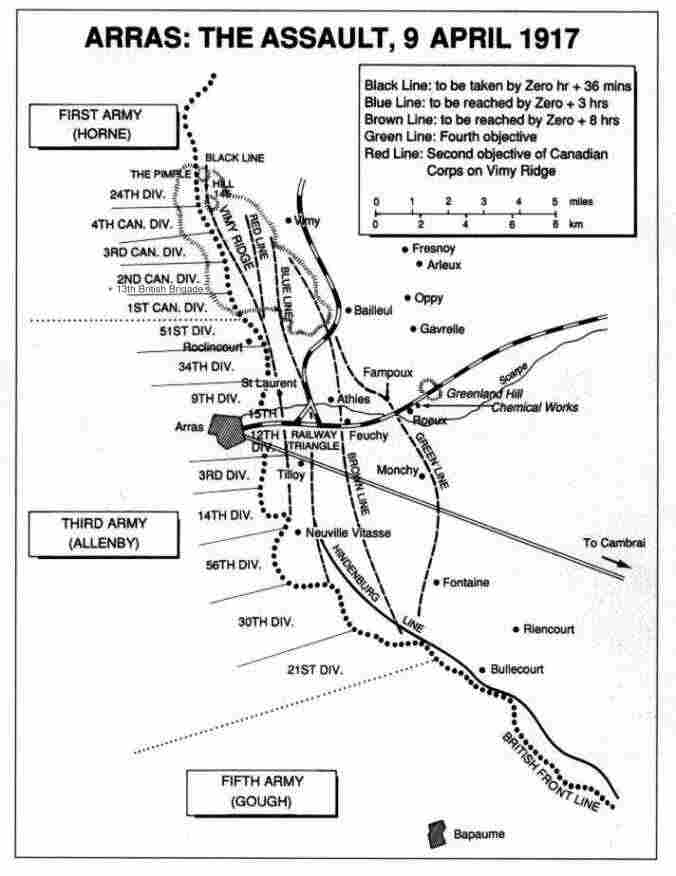

Above is Charlie’s Christmas 1914 box and his 1916 Bible, along with a spare passport photo
After the War
After the war he returned home and when he married Mary Bennett in 1922 (SR 644/11/0447) was a contractor’s clerk. They had two sons, Charles and William (Dad, “Charlie” as a boy, has been known as “Jock” in N Ireland; William was known as Willie in the family as a boy but later became Bill).
The 1921 census, the year before he married, showed him living at home with the Adam-Douglas family. He was described as a traveller for Dunlop and Jack Wholesale Stationers.
Charlie worked as a clerk at Rowan’s Shipyard in Glasgow for some years but was made unemployed, the story goes that this was to make way for a nephew of the manager. This is where his step-father was employed, as the 1921 census shows.
He worked in the civil service, securing a temporary position in a labour exchange which became a permanent one. From dad I know that he was tea-total and was a good singer, like his brother Alec. He was a member of the William Morris choir. Once he was in an audience judging at the BBC and they were all offered a glass of whisky but grandad declined his. I remember him in the backgarden of my parents’ house in Gilnahirk, near Belfast a couple of weeks before he died, as a slightly built and quiet man with a pipe.
The Douglases moved from The Bungalow at Caldercuilt Road around the time Uncle Bill was born and moved to an address at 283 High Street, with a graveyard opposite. Dad and I took a visit to this part of Glasgow around 2008 or 2009, including walking out to find the site of the bungalow. No trace could be found, though it was remarkable to find ourselves alongside the wide and flowing Kelvin amid bushes and fields so close to an estate. The bungalow was of wooden construction. Dad remembers playing happily there as a boy and that there were chickens and goats. One kid he was fond of was turned into a rug which Uncle Bill sent over to Belfast. There is a photo of Dad with a goat.

He thinks they moved from Caldercuilt Road so he could be close to a school. The new tenement on High Street had gas and Dad dreaded coming home before his mother as he was afraid to light the gas. One Friday Dad came home from school to find his mother in a gleeful mood. She announced that they were moving house. A day or two before he had walked with his parents up to the Co-op to leave in a postcard with their name and address. This was for a draw for a new house. The Douglas card was pulled out and resulted in them moving to 9a Angus Street. The new tenement was much better- it had electricity!
Photo of 9a Angus Street in Glasgow
Mr Greenlees, a neighbour, had a horse and cart and he helped the family move their beds and other possessions. Dad is unsure quite when this happened, he thought it was when he was around 10-12 years of age (ie 1934-36) but the electoral roll of 1929/30 I know that Charles Douglas, Mrs Mary W Douglas were living at 283 Springburn Road, in the 9th Ward.
Charlie lived at Angus Street for the rest of his life. The electoral roll for 1947-8 includes Charles Alexander Douglas, Charles Douglas and Mary Douglas at 9 Angus St. Dad has a picture of his parents on holiday in Blackpool in the 1950s.
I was not a keen reader as a young boy but a developing interest in history spurred me on. One resource that I used was a Pears’ Cyclopaedia for 1943. As far as I was aware it had always been in our family, it belonged to Dad, it had his name on it. Looking back as an adult I realised that in 1943 Dad was in India and it must be Grandad’s signature.
After Charlie died he was cremated at the Glasgow Necropolis.
Generation X: Family of Charles Alexander Douglas and Mary Bennett
1. Charles Douglas, born 1922
2. William Bennett Douglas, born 1927
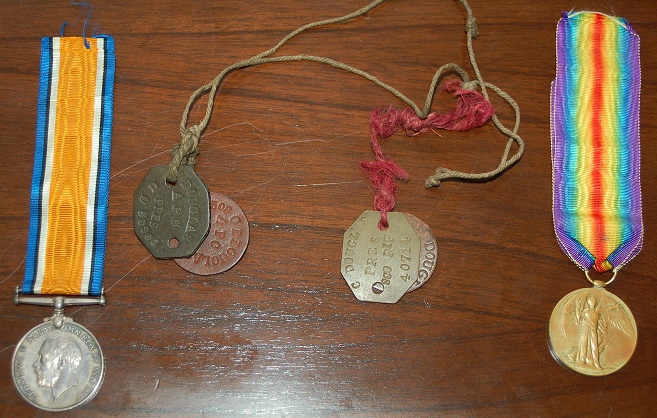
Charlie Douglas’s medals and dog-tags from WW1
After the War
Prime Minister David Lloyd George had planned to build “homes fit for heroes” after the war but the reality was that he now led a divided Liberal Party and relied upon Conservative support in the House of Commons. Added to the crippling War Debt this meant that veterans returned to a much less ambitious programme. So men like Charlie found that they were returning to conditions not very different to those they had left home for.
Below: portrait of Charlie (thanks to Colin Douglas). This was owned by his mother, Mary Douglas nee Dow
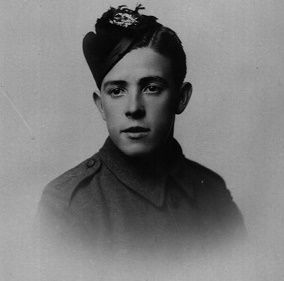
Tracing War Records
Now, the Bible inscription does say 5th SR. This contradicts the information that he was in the 2nd Battalion. Did he transfer from one to the other? What was the 5th Battalion? From www.1914-1918.net/scotrif.htm we see that there were 4 battalions in the regiment at the outbreak of war, with only 1st and 2nd active abroad. There were also 1/5-8, 2/5-8 and 3/5-8 battalions of the Territorial Army. 1/7, 1/8 served in Egypt; 2/5, 2/6, 2/7, 2/8 served at home, largely; 3/5, 3/6, 3/7, 3/8 do not fit the information we have about his 2 years 4 months service, nor does the 15th Battalion. Of the New Army regiments, the 11th and 12th can be excluded, along with the 14th-18th battalions. Elsewhere we read that the 5th Battalion was in Glasgow as part of the Lowland Division in August 1914. They landed at Le Havre on 5th November 1914, part of the 19th Brigade in 6th Division. At the end of May 1915 the Brigade became part of 27th Division and fought at the Second Battle of Ypres. In August 1915 they were part of 2nd Division, then in November 1915 they joined 33rd Division. On 29th May 1916 the 5th merged with 1/6th Battalion to become the 5/6th Battalion. They fought at the Somme and Arras.
Charlie did not keep a diary but he drew cartoons whilst serving in France. These are in Stevenage now.
From Uncle Bill Douglas in Stevenage I know Charlie was discharged at Boulogne on 7th June 1919 from the army as Charlie D Douglas. His service number is that from the Pay Corps. Why discharge occurred there and not in England is a mystery to me: was it to say that soldiers could enjoy themselves on the boat home or to allow them the chance to see a bit of France before their return?
Some 40% of British Army WW1 service records survive: Charlie’s is not among them. There are 26,700 pages of information on those whose names begin with “Dou,” with description, where they served, medical history and disciplinary issues. Speaking of discipline, according to Dad, Charlie had a clean service sheet. (I had much more success with surviving army records with his future brother in law who joined the Argyll and Sutherland Highlanders, but that will follow in the Bennett section).

Photo showing the Cameronians (Scots Rifles) marching. Possibly taken in Hamilton close to the barracks, the photo was in postcard format. At the front was a mounted officer. (photo from Bill Douglas)
Below: the telegram every mother must have dreaded. This one, thankfully, told of an injury where so many told of a death.
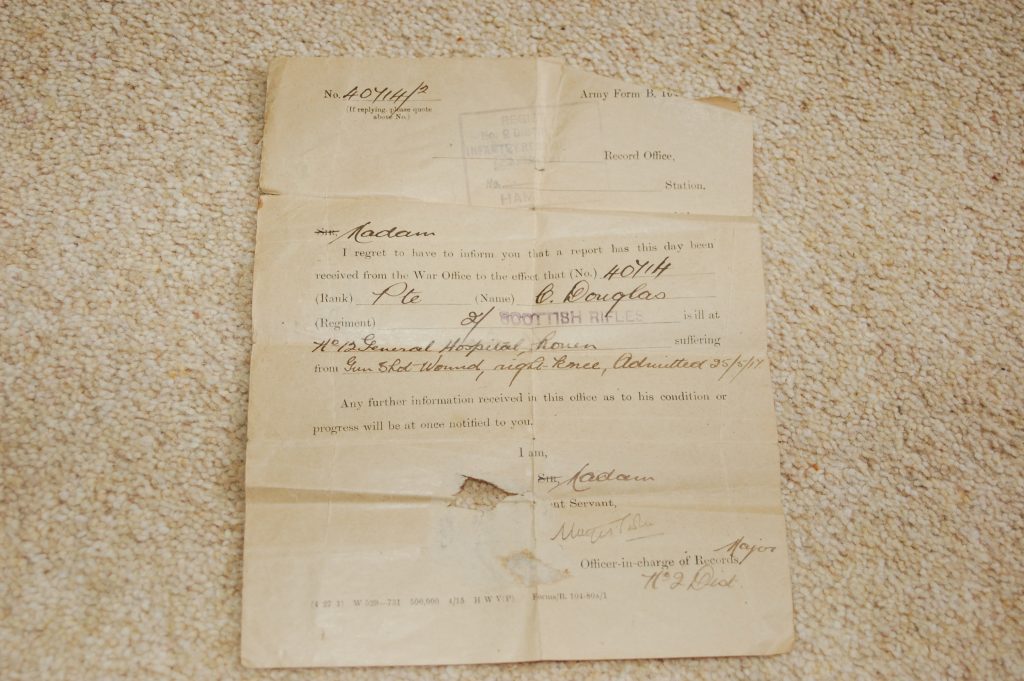
Below is a picture of The Bungalow at Caldercuilt Road, Springburn, where Charlie lived after he married Mary Bennett. It was a wooden construction without heating or running water. As the house had no foundations in the ground no trace of it could be found when Dad and I visited around 2011. The Bungalow was not recorded on the Valuation Rolls, suggesting that it did not legally exist or perhaps that it’s value was below the threshold set. I am not sure who the people are in this photo but it is likely that most are members of Mary Bennett’s family. The little boy could be Dad, though it might just be Willie Bennett who died when a headstone fell on him.

The Battle of Arras
An online history of the 5th Scottish Rifles is available, thanks to the Australian government. Looking at the period April-May 1917 tells ua a bit about how Charlie came to be injured.
His battalion was out of action for 3 weeks at a cold, wet camp behind the lines with no entertainment and close to nowhere. This ended with instructions to move closer to the front to take part in the Arras offensive. Although the 1st Battalion had been intended to take the lead in the end it was the 5th who did. B company had a supporting role.
There followed a few days relief before they took part in further action. The battalion marched triumphantly from the scene when relieved on 24th April.
Map from 1914-1918.invasionzone.com